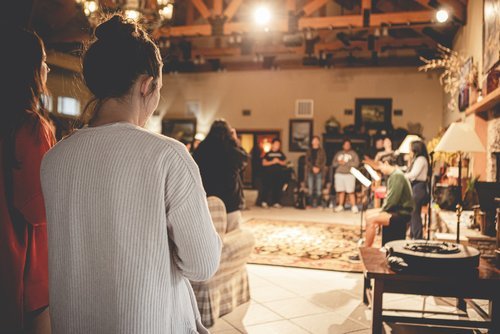Liturgy in a Changing World
By Nicholas Zork
The world is always changing, but the shifts in the past few years have felt especially dramatic. And I don’t have to tell you that they have affected the way we gather—in general and as church communities. For most local churches, in-person participation has not returned to pre-pandemic. There is little indication that this phenomenon is temporary. And the cause is multifaceted. It’s not that folks don’t value community. But people are connecting in different ways.
Rather than trying to unwind the clock, it seems we’d be wise to ask which of our inherited practices are worth preserving and adapting, allowing us to appreciate the past, look to the future with hope, but embrace the present reality.
The question of what to preserve is not one I can pretend to fully answer. But I’d suggest a helpful starting point to consider can be found in Acts 2:42, which identifies four core early Christian practices—long before followers of Jesus had established buildings or bureaucracies to maintain:
“They devoted themselves to the apostles’ teaching and to fellowship, to the breaking of bread and to prayer.”
Over the past few weeks, I’ve taken part in a large, online group that meets on Sabbath afternoon and is a primary church community for many participants, played music in a juice bar with a mix of church members and neighborhood residents, helped support a Friday evening bible study dinner in a cafe, spent a Sabbath afternoon eating, talking, and praying in a New York City apartment. What struck me about all these gatherings is that they each included the four elements listed in Acts 2:42: scripture, fellowship, food, and prayer (except the online gathering, which didn’t involve any shared meal).
At first consideration of the list in Acts 2:42, it seemed one thing was conspicuously absent: serving one another. But then I remembered that the type of fellowship described here was not just superficial socializing but a true integration into a community where people care for one another. And the breaking of bread was not simply ceremony but also feeding those without access to nutritious food.
I’ve participated in many discussions with ministry leaders about whether people will ever worship in church buildings in the numbers they once did. Perhaps there is a better question: are we interested in cultivating Gospel community with people where they actually are—physically and metaphorically less engaged with the type of large gatherings we sometimes imagine to be synonymous with worship.
Gathering in large groups can, of course, be an inspiring and transformative experience, giving us the opportunity to meet God with a diverse community that helps us transcend our often isolating individuality, rehearse postures of hospitality and inclusion, and celebrate our shared life on a scale that expands our imagination in particular ways. But getting together in buildings on Sabbath morning is not the only way to worship. We are invited to respond and be present to a God who is always present to us. And there is no better way to do this than by being present with our neighbors where we and they are, embodying the vision of Scripture, cultivating community, praying together, and enjoying a meal at which God is present.
The world is always changing, but we are changing, too. And by grace these changes can be for the better, not so that one day we will be good enough to be loved and accepted by God but because we already are. And this divine love extends not only to each of us as individuals but also to our imperfect, beautiful Gospel communities, figuring out together what it means today to follow Jesus.

